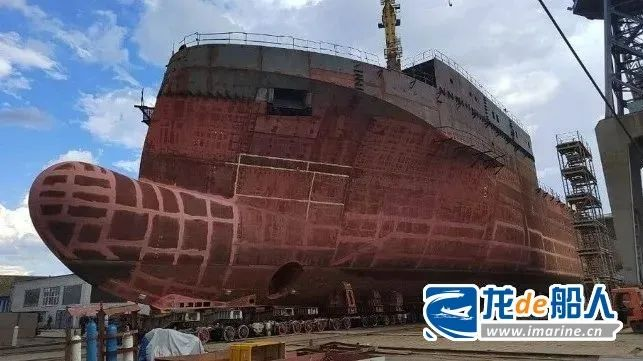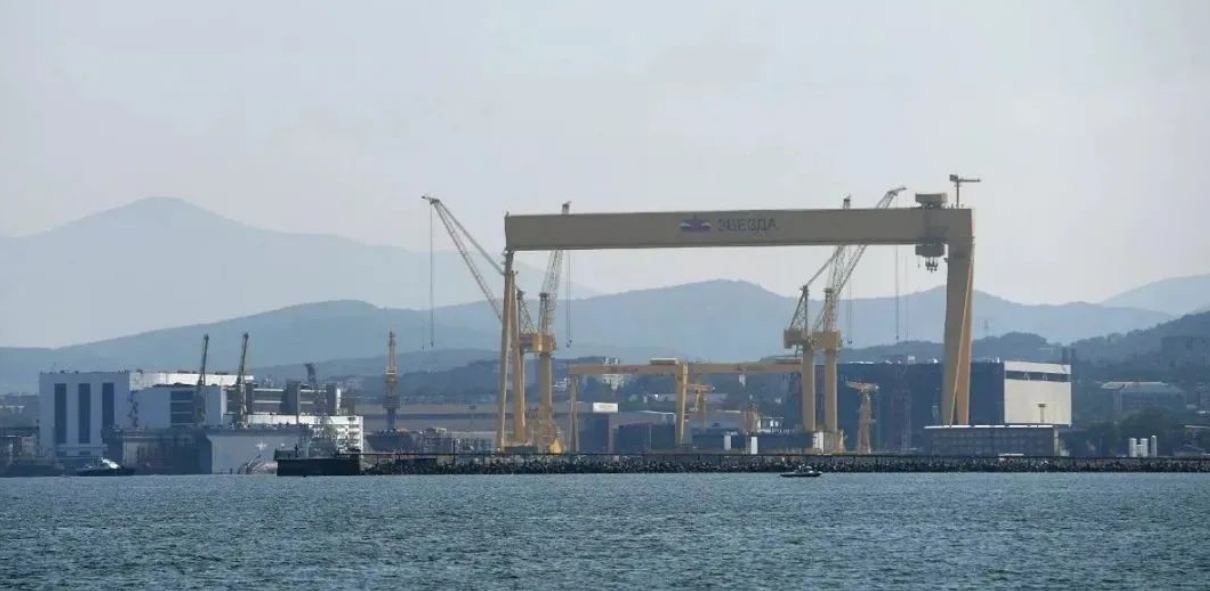Russia is turning to China for help in revitalizing the country’s shipbuilding industry.

A few days ago, Andrei Kostin, CEO of Russia’s state-owned VTB Bank, who has just taken over Russia’s largest shipbuilder, United Shipbuilding Group (USC), attended the Third “Belt and Road” International Cooperation Summit Forum in Beijing together with Russian President Vladimir Putin.
During the forum, Putin announced that the Northern Sea Route will be open to ice-breaking cargo ships all year round, and invited more countries to participate in the development of the Northern Sea Route. The so-called Northern Sea Route is the “Northeast Sea Route” of the Arctic Sea Route connecting Asia and Europe, which is one-third shorter than the traditional route through the Strait of Malacca and the Suez Canal. This means that from 2024 onwards, the global shipping industry could be turned upside down. Meanwhile, Andrei Kostin says: “He is pursuing partners from China in finance and shipbuilding, with the aim of building a new Russian shipyard together with China as much as possible.”
In April this year, Russian Deputy Prime Minister and Minister of Industry and Trade Denis Manturov said that Russia plans to build about 150 cargo ships by 2027, including tankers, grain carriers, container ships, tugs, dry cargo ships and barges. Valery Kireyev, director of Soyuzproektverf Engineering, Russia’s oldest shipyard design agency, revealed at the Ship Repairing, Equipping, and Modernization Conference, which opened in St. Petersburg on Sept. 26, that Russia’s shortfall of sea-going vessels is estimated to be more than 400, and the transportation of cargo on the Northern Sea Route alone will need 155 ice-class vessels alone for cargo transportation on the Northern Passage. But Russia’s Zvezda Shipyard is unable to cope with such a large shipbuilding program on its own, and urgently needs to establish a high-tonnage shipbuilding base on St. Petersburg’s Kotlin Island.
Due to the Russia-Ukraine conflict, the Russian shipbuilding industry has been suffering from the severe sanctions imposed by the West. Previously, Russia’s Zvezda Shipyard proposed to build 15 ice-breaking liquefied natural gas (LNG) carriers through a partnership with South Korea’s Samsung Heavy Industries. The Russian government planned to develop the country’s shipbuilding technology and accumulate relevant experience through this cooperation, but due to international sanctions, this partnership has been forced to turn into an “underground mode”. So far, only five of the 15 LNG carriers in the series are on schedule. According to the latest news, the 10 new ships that have not yet begun construction are likely to face withdrawal of orders. Also, international equipment suppliers such as France’s GTT have withdrawn from the Russian market, leaving the country’s shipbuilding industry in a difficult position in terms of supplying major equipment and materials.
In August this year, at the behest of Russian President Vladimir Putin, Russia’s state-owned VTB Bank toke over 100% of the state-owned shares of United Shipbuilding Group in order to resolve its financial problems. The measure means transferring control of Russia’s major shipbuilding assets to Moscow-based VTB Bank. Founded in 2007, United Shipbuilding Group’s shipbuilding business includes merchant ships, nuclear submarines, aircraft carriers and other vessels, and it operates some 40 shipyards, design companies and repair facilities across Russia, employing 95,000 people.

In order to revitalize its shipbuilding industry, Russia has announced plans in the recent past to provide additional support to the country’s shipbuilding industry by increasing the amount of subsidies to shipyards in the 2024 fiscal year by about $68 million. The country’s shipyard subsidy budget for 2024 will increase from $122 million (then about Rs. 889 million) to about $190 million (then about Rs. 1.385 billion). The amount of subsidies for the following two years will remain in this range. The increased funds are used to subsidize the costs of Russian shipbuilders in order to ease the production woes of ship components.
Along with this, Russia also plans to subsidize the Azov ship repair yard with an additional $20 million. In addition, Russia’s 2024 fiscal cycle will also focus on the development of the Northern Sea Route, with a total of $417 million (about Rs. 3.04 billion at the time) to be allocated for the construction of nuclear icebreakers and multi-purpose nuclear supply vessels, a $40 million reduction in the budget for this category compared to the 2023 fiscal year.
Based on the current Russia-Ukraine status quo, Russian President Putin seems keen to revitalize Russia’s shipbuilding industry. In addition to financial support, Putin also inspected the Far Eastern Zvezda Shipyard on September 11th and attended the naming ceremony of two newly built ships, which further confirms the importance Putin attaches to the country’s shipbuilding industry. At the naming ceremony, Putin had said that the development of the Arctic Ice Class fleet is important for Russia to strengthen its national and global energy security.
It is understood that China and Russia have cooperated many times in the field of shipbuilding.2023 May 21-24, China-Russia Business Forum was held in Shanghai. During the forum, Russian United Shipbuilding Group Import and Export Corporation and CSSC Wuhan Marine Machinery Plant successfully signed a cooperation agreement, the two sides toke flux cored wire as a start, in-depth development of various cooperation.
In May this year, Shandong Iron & Steel Group released news that the first batch of nearly 500 tons of low-temperature-resistant Russian standard channel steel to complete the supply, the product will be in a steel company to complete the processing and transported to the site of the Russian project, it is reported that the project is to revitalize Russia’s shipbuilding industry plan, one of the key projects, with a total investment of more than $ 12.8 billion in the project. According to the plan, after the completion of the construction of the project, it will have the ability to build large LNG ships, drillships, FPU/FPSO/FLNG and other cutting-edge high-end marine equipment, and build the largest modern shipyard in Russia.
On March 22 this year, the website of the Ministry of Foreign Affairs published the Joint Statement of the People’s Republic of China and the Russian Federation on Deepening the Partnership of Comprehensive Strategic Collaboration in the New Era.

The joint statement mentions that China and Russia will continue to carry out practical cooperation in areas such as shipbuilding and continue to strengthen cooperation in areas such as research and development of marine equipment. According to the joint statement, China and Russia will continue practical cooperation in civil aviation manufacturing, automobile manufacturing, shipbuilding, metallurgy and other areas of mutual interest. The two sides will strengthen cooperation in the field of transportation, improve cross-border infrastructure, enhance the capacity of border crossings and ensure their stable operation. The parties will continue to support the rail and sea transportation of goods between China and Europe across the border with Russia and improve the efficiency of transportation. The two sides will continue to strengthen cooperation in the fields of marine scientific research, marine ecological protection, marine disaster prevention and mitigation, and research and development of marine equipment, and continue to deepen practical cooperation in polar scientific research, environmental protection, and the organization of scientific expeditions, so as to contribute more public goods to global ocean governance.
In 2021, a newly-built dry dock at Russia’s Red Star Shipyard passed acceptance and was put into use, and a number of Chinese companies can be seen during the construction period. Nantong COSCO Heavy Industries had supplied many cranes of various types such as 1200T gantry cranes, 320-ton gantry cranes, 100-ton gantry machines, etc. Between 2017 and 2019, China Communications construction company Ltd. successively received three contracts for the second phase of the construction work at the Zvezda Shipyard as well as the supply of cranes valued at RUB19.805 billion and dredging engineering equipment valued at RUB15.291 billion. In June 2019, Zvezda Shipyard again signed a contract with China Communications Construction to invest RUB 2.788 billion to expand the scope of the pre-dock site.


